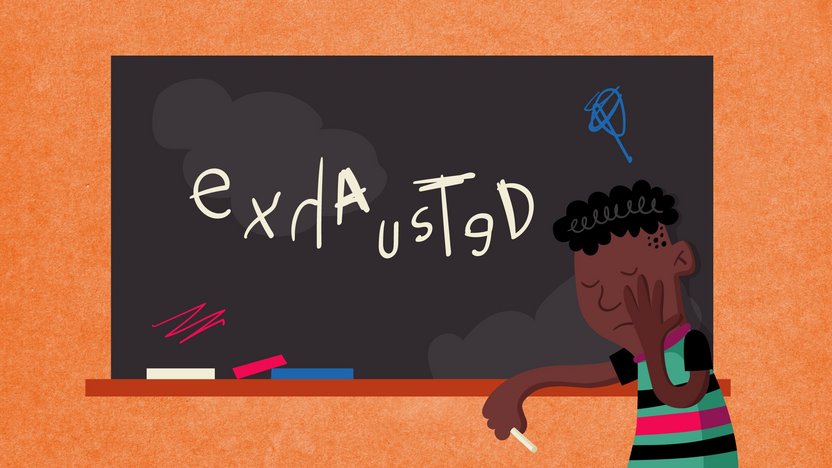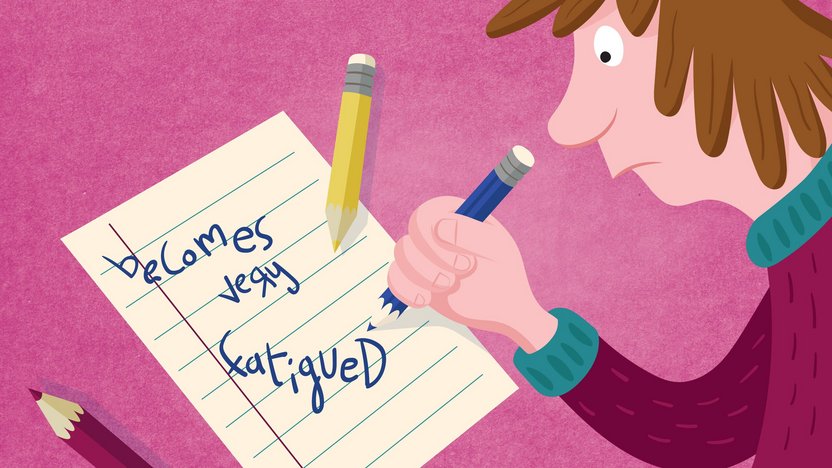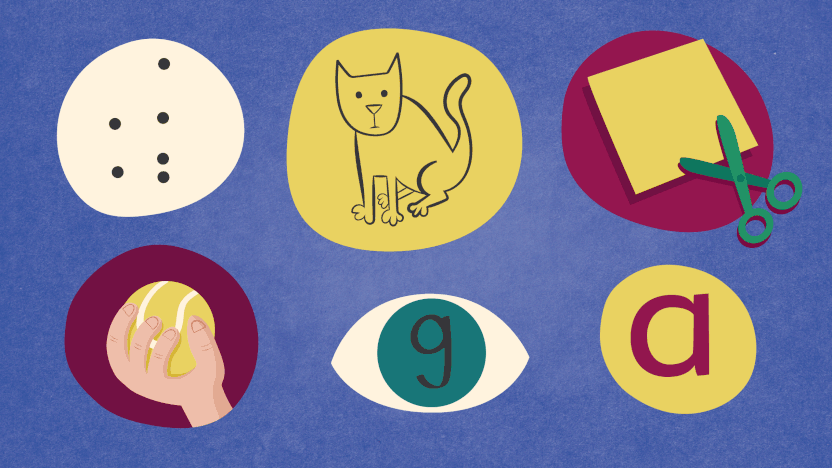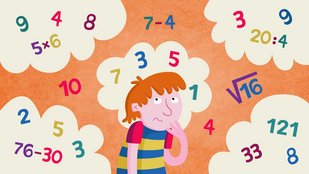Dysgraphia
The word dysgraphia means difficulty with writing. Teachers may report that your child can make their writing neat when they really try hard. This may be true, but the amount of energy and concentration needed for them to write neatly is an overwhelming drain on the child's learning resources. We all have a limited amount that we can give in a day. It may not be a lack of effort when a child with dysgraphia performs poorly on writing exercises, but could be that they are already exhausted.

What are the difficulties?
- Forming letters the wrong way or forgetting how to make letter shapes.
- Making letters in different sizes instead of having uniform height.
- Mixing up capitals and lower case letters within the same words.
- Replacing d with D, or b with B because this is easier to remember which direction the letter goes.
- Written work may go across, above or below, or slant away from the margin and not stay on the page lines.
- Writing slopes either up or down the page.
- Spacing between words and between letters can be too close together or too wide apart.
- Finding the pencil hard to control and hold steady.
- Having an unusual pencil grip.
- Pressing too hard on the paper.
- Lots of erasing and crossing out.
- Illegible handwriting.
- Becomes very fatigued when writing.
- Difficulty maintaining concentration.
- Many children with dysgraphia are poor spellers.

How to recognize dysgraphia
If a child has had 2 years of handwriting instruction in school, and they are still having these difficulties, then dysgraphia is likely to be a cause. To identify dysgraphia, collect several writing samples that have not been corrected, and look for the difficulties listed above. Some specialist teachers or occupational therapists can screen for dysgraphia.*
How to help younger children with dysgraphia
- Develop motor control using activities such as dot-to-dot and keeping lines within mazes.
- Coloring within the lines of a picture.
- Using scissors to cut out pictures.
- Exercises to strengthen hand muscles.
- Practice letter formation while watching and following the teacher.
- Trace letters with your finger.

Young children will usually respond to an intensive, multi-sensory handwriting program that incorporates mnemonics and strategies. Nessy likes a program called Handwriting Without Tears.
Strategies to help older children with dysgraphia
Children over 7 can begin learning to touch type.
By the time children are 9 years old, handwriting has become ingrained, and it is difficult to make much improvement. As academic demands increase, it is worth switching to developing typing skills.
Dysgraphic children will take longer to write, so they should be given extra time for all assignments. Assistive technology can also help.
*A related but different condition, sometimes diagnosed in older children, is a specific learning disorder with impairment in written expression which is a difficulty when getting ideas onto paper and organizing writing. The Nessy opinion is that this is part of dyslexia as it is a difficulty that affects most dyslexic children.
